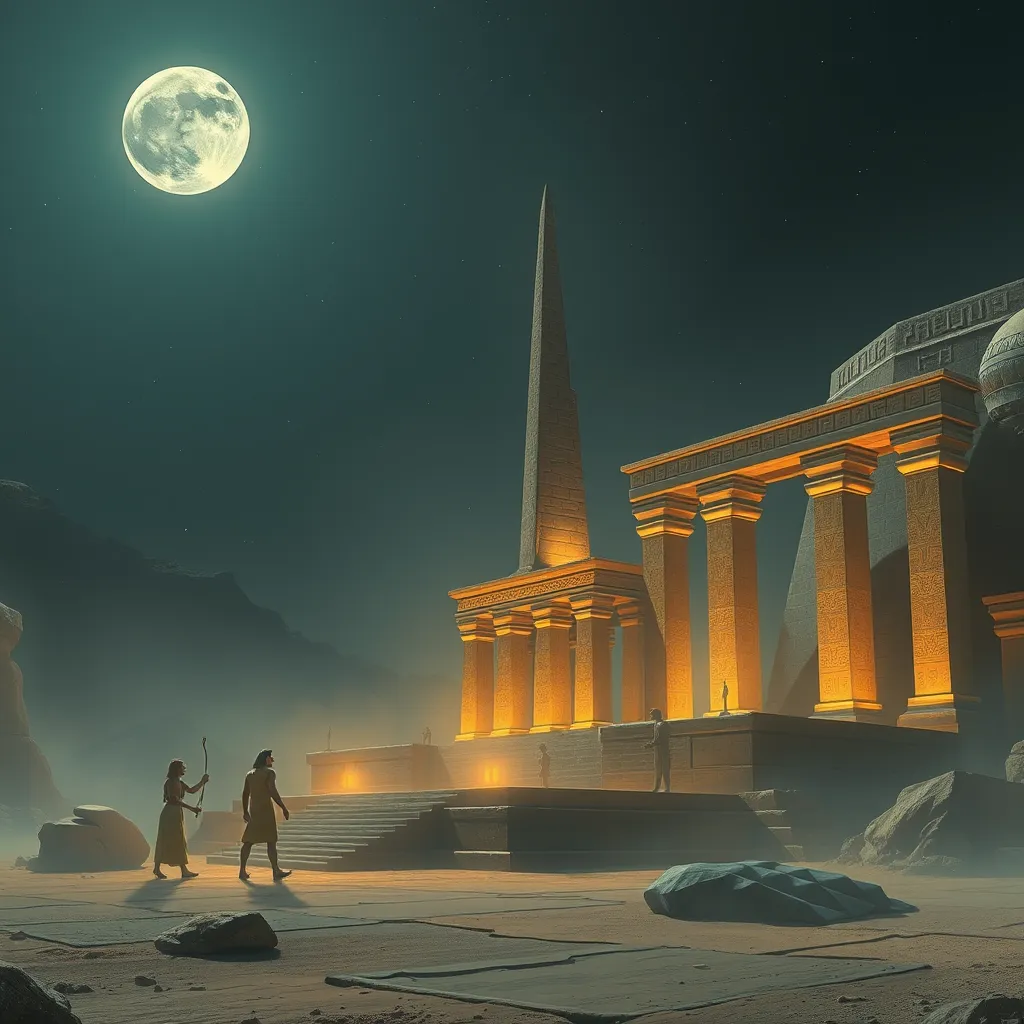The Duat: A Symphony of Spirits
I. Introduction to the Duat
The Duat, a central concept in ancient Egyptian belief, refers to the realm of the afterlife where souls would journey after death. This mystical domain is not only a place of rest but also a complex landscape filled with trials, deities, and spiritual transformations. The significance of the Duat in ancient Egyptian culture cannot be overstated, as it encapsulates their understanding of life, death, and the journey that follows.
In the context of the ancient Egyptian belief system, the Duat serves as a crucial transition zone between the mortal world and the afterlife. It embodies their understanding of immortality and the continuance of the soul beyond physical existence. The Duat is often depicted as a labyrinthine landscape filled with rivers, mountains, and various supernatural beings, making it a unique and essential part of their spiritual narrative.
II. The Structure of the Duat
The Duat is often described as a multi-layered realm, divided into various regions, each with its own characteristics and challenges.
- The Fields of Iaru: A paradise where the blessed souls enjoy eternal happiness.
- The Waters of Nun: The primordial waters representing chaos and potentiality.
- The Hall of Ma’at: The place where the heart of the deceased is weighed against the feather of Ma’at, the goddess of truth.
- The Serpent Apep: A manifestation of chaos that the deceased must confront during their journey.
The symbolism of the Duat’s landscape reflects the ancient Egyptians’ views on life and death. The contrasting regions symbolize the journey from chaos to order, from death to rebirth. Each element of the landscape serves a specific purpose, guiding the souls through their transformation and ensuring their safe passage into the afterlife.
III. The Role of Spirits in the Duat
Within the Duat, various types of spirits play significant roles, influencing the fate of the deceased.
- Protective Spirits: Spirits that safeguard the journeying souls against malevolent entities.
- Judging Spirits: Spirits that assess the worthiness of the deceased during their trials.
- Guide Spirits: Spirits that lead the souls through the complexities of the Duat.
These spirits represent different aspects of the afterlife journey, acting as guides, protectors, and sometimes adversaries. Their functions illustrate the moral and ethical considerations the ancient Egyptians held regarding life and the afterlife.
IV. The Journey Through the Duat
The journey through the Duat is a vital aspect of the afterlife, characterized by various trials that the soul must undertake to achieve immortality. This journey begins immediately after death, where the soul is believed to embark on a perilous path filled with both challenges and opportunities for growth.
Key challenges faced by the deceased include:
- Confrontation with Apep: The soul must confront and overcome the chaos embodied by the serpent Apep.
- Weighing of the Heart: The heart is weighed against the feather of Ma’at; a light heart signifies a virtuous life.
- Navigating Obstacles: The soul must navigate various obstacles, including rivers and fiery landscapes, often aided by protective spirits.
Successfully navigating these trials signifies the soul’s readiness to enter the afterlife, ultimately leading to reincarnation or eternal bliss in the Fields of Iaru.
V. The Deities of the Duat
The Duat is populated by numerous deities who play essential roles in guiding and judging the souls of the departed. These deities are integral to the ancient Egyptian afterlife narrative.
- Osiris: The god of the afterlife, resurrection, and regeneration, Osiris presides over the judgment of souls.
- Anubis: The jackal-headed god responsible for mummification and guiding souls through the Duat.
- Ma’at: The goddess of truth and justice, her feather is used to weigh the hearts of the deceased.
- Horus: The god associated with kingship and the sky, often depicted as protecting the souls on their journey.
These deities not only represent various aspects of the afterlife but also symbolize the moral values that ancient Egyptians held dear, such as truth, justice, and protection.
VI. The Book of the Dead and Its Influence
The Book of the Dead, known as “The Book of Coming Forth by Day,” serves as an essential guide for the deceased navigating the Duat. This ancient text contains spells, prayers, and incantations designed to assist the soul in overcoming obstacles and achieving a favorable judgment.
Key spells and imagery related to the Duat include:
- Spell 125: The famous “Weighing of the Heart” ritual, detailing the process of judgment.
- Guides and Amulets: Instructions on the use of protective amulets to safeguard the soul.
- Invocations: Prayers to deities for assistance during trials and challenges.
The Book of the Dead reflects the ancient Egyptians’ beliefs about the afterlife and serves as a critical resource for understanding their spiritual practices.
VII. The Duat in Art and Culture
The imagery and concepts associated with the Duat have been richly depicted in ancient Egyptian art, showcasing the importance of this realm in their culture.
Depictions of the Duat often include:
- Hieroglyphics: Texts detailing the journey of the soul and the roles of various deities.
- Wall Paintings: Scenes illustrating the trials faced by the deceased, including the weighing of the heart.
- Sarcophagi: Elaborate coffins adorned with symbols and spells intended to protect the body and guide the soul.
The influence of Duat imagery extends beyond ancient Egypt, inspiring modern interpretations of the afterlife in literature, art, and spiritual practices.
VIII. Conclusion: The Legacy of the Duat
The Duat holds a profound legacy in ancient Egyptian culture and religion, shaping their understanding of life, death, and the afterlife. Its intricate structure and rich symbolism reflect the complexities of human existence and the quest for immortality.
In contemporary spirituality, the Duat continues to resonate, serving as a source of inspiration for those exploring themes of life after death and spiritual transformation. Its teachings, encapsulated in texts like the Book of the Dead, remain relevant, inviting modern seekers to contemplate their own journeys and the nature of existence.




